We use cookies to make your experience better. To comply with the privacy directives, we need to ask for your consent to set the cookies. Learn more.
Snowboard Buyers Guide
When purchasing a snowboard the chances are that you’ll come across a lot of terminology that may be new to you and this can be both daunting and confusing. To try and help you out, to make sure that you get the correct board for you with the right features, we have compiled a guide to the common terms and features, what they mean, and what you should be looking for to suit your style of riding.
Snowboarding Ability
First things first, it’s important to know your snowboarding ability level in order to make sure that you choose the best snowboard for you.
- Beginner: This is your first time boarding, or perhaps you’ve had a few days on the slopes and you are still getting to grips with the basics, and trying to gain full control of the board. You are riding green runs comfortably and occasionally testing yourself on a blue run.
- Intermediate: You are comfortable with everyday riding and perhaps you are starting to try and throw in a trick or two. You are completely comfortable on green runs and you are riding the occasional red. You link turns consistently, with few problems.
- Advanced: You have the ability to ride all pistes and off slope. You also have some advanced tricks up your sleeve. Carving and turns are second nature to you. Perhaps you’re riding rails and trying terrain park areas. You can switch, have a repertoire of party piece tricks and you can pull off 180’s and 360’s.
Snowboard Profiles
Rocker/ Reverse Camber
The rocker (also known as reverse camber) is the shape of the board, not dissimilar to the shape of an upside down boat hull, and it produces better float in soft snow. It also helps to initiate a turn more easily, with a decreased risk of catching an edge. A rocker helps a wider board to stay manoeuvrable. A board with a rocker is great for riding in powder, as well as great for the park due to less chance of catching edges. A rockered board is great for a beginner, but also for the advanced rider.
Camber
Camber is the traditional shape of snowboards, and it is similar to rocker, only the other way round. So this time it is in a curve similar to a rainbow shape. The camber shape is in the middle of the board. When the board is unweighted with the contact points are at either end. Turn initiation needs to be more precise and a cambered board is great for boarding the piste and harder snow. When stood on a cambered board, there is even, concentrated pressure on the edge, from tip to tail. This produces better edge hold and pop. Due to this, a cambered board is often preferred by racers and high-level park riders.
Hybrid
Nowadays there are many boards that combine both camber and rocker/reverse camber. These boards combine both elements to create a versatile ride, or to really push the barriers in a particular style of riding. So, depending on how the rocker and camber is incorporated you could have a board that excels in park, freestyle, powder, or even a great all rounder.
Riding Style
To make sure that you choose the right board for your needs, you need to know the type of riding that you’ll, mostly, be throwing your board through.
- Freestyle: You’re into riding terrain parks, grinding rails and doing tricks.
- Powder: You love your off piste, going off country and discovering untouched powder.
- All Mountain: You’re a bit of an all rounder. You ride both off and on piste, park and pipe.
Snowboard Shapes
There are several different board shapes, each to cater for a different style of riding. They are as follows:
- Freeride: These boards are directional, so they are designed to be ridden in one direction, which means that the tail and nose differ in shape.
- Freestyle: These boards tend to be wider and more stable, with a softer flex, offering a more forgiving ride. This makes it a great choice for a beginner as an entry level snowboard. Freestyle boards are usually twin tipped, or directional- twin. The difference being that the twin tipped has an identical nose and tail, meaning that they can be ridden both forwards and backwards, whereas the directional twin-tip, although being identical in shape on the nose and tail, has a stiffer tail.
- Carving / Race Board: These are narrower than freeride and freestyle boards. They also feature a stiffer flex in order to gain more speed and cleaner carving turns. These boards almost have the look of a large ski. They are made in both symmetrical and asymmetrical shapes and often have a shovel on the nose and are one directional. These boards are predominantly reserved for the advanced rider and certainly wouldn't be good for riding in the park or performing tricks.
- All Mountain: These are generally a hybrid, of different snowboard shapes that try and give you a one board quiver to explore all the mountain, (park, piste and backcountry). The boards usually feature a directional twin option so you can centre stance the board or set it back for the powder days!
Twin-Tip Vs Directional
As mentioned previously, some board shapes differ at the tail and nose. A twin-tip is the same shape at both tip and tail allowing it to ride both forwards and backwards and therefore lends itself more to the rider who wishes to ride freestyle or park. Directional boards are designed to be ridden one way only, which make them a good choice for the freerider.
Snowboard Length
As a very quick guide to choosing your snowboard length, as a rule of thumb, you should try and choose something that comes up to between your chin and nose. This is a very broad way to choose your length, and the more serious rider should really take weight as the integral factor, and certainly boot size (regarding the width of your board) into account, as well as the type of riding for which you require your board.
Below are some sizing guides for the various boarding styles:
Entry Level Snowboard Calculator:
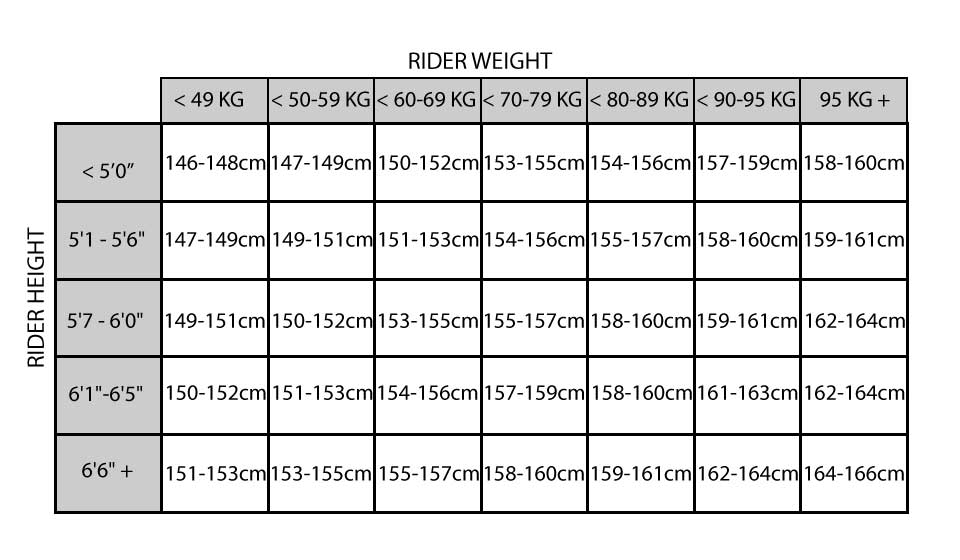
Park Riders Snowboard Calculator:
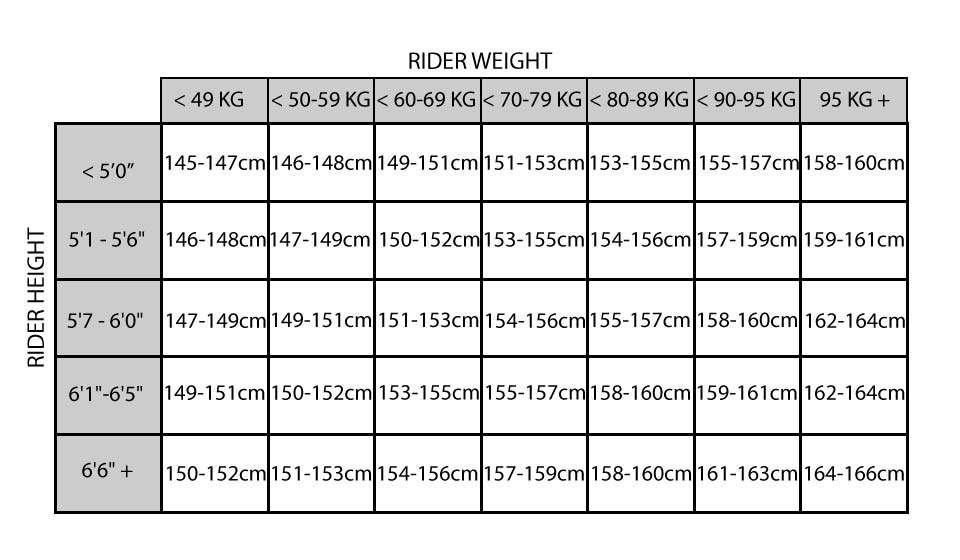
All Mountain Snowboard Calculator:
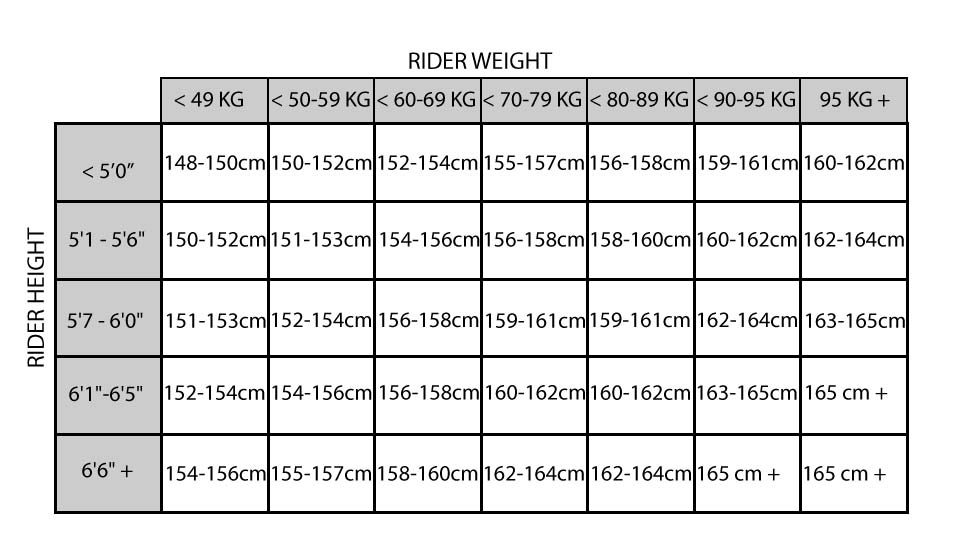
Women’s Snowboard Calculator:
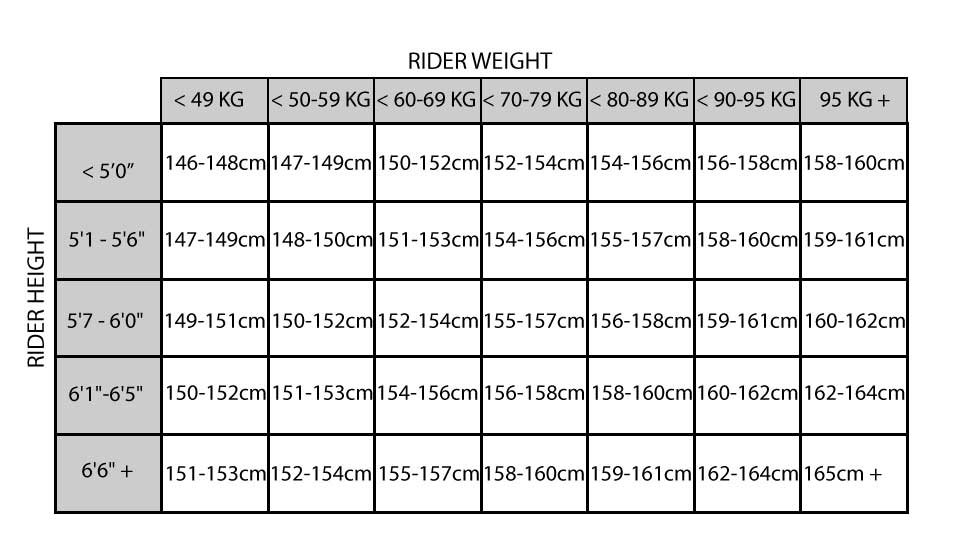
Snowboard Width
The width of a snowboards 'waist' (width at the narrowest point) should be so that the snowboard boots do not hang over the edge of the snowboard too much. If there is too much boot over hang the heel or toe will catch on the snow and will likely make you fall. Therefore the width of the waist of the snowboard should be chosen by allowing for the length of the snowboard boot from heel to toe.
Snowboard Flex
As a basic rule softer flex is more manoeuvrable and forgiving, and therefore favours the beginner or someone that loves riding the park. A stiffer board requires more precision and is therefore a good choice for the intermediate to advanced boarder.
Laminates, sidewalls and core materials coming soon.
Extruded & Sintered Ski Bases
The underneath of the snowboard is known as the base and is made from polyethylene, a type of plastic, in the form of pellets. The difference between the two types of base is solely in the manufacturing processes used. 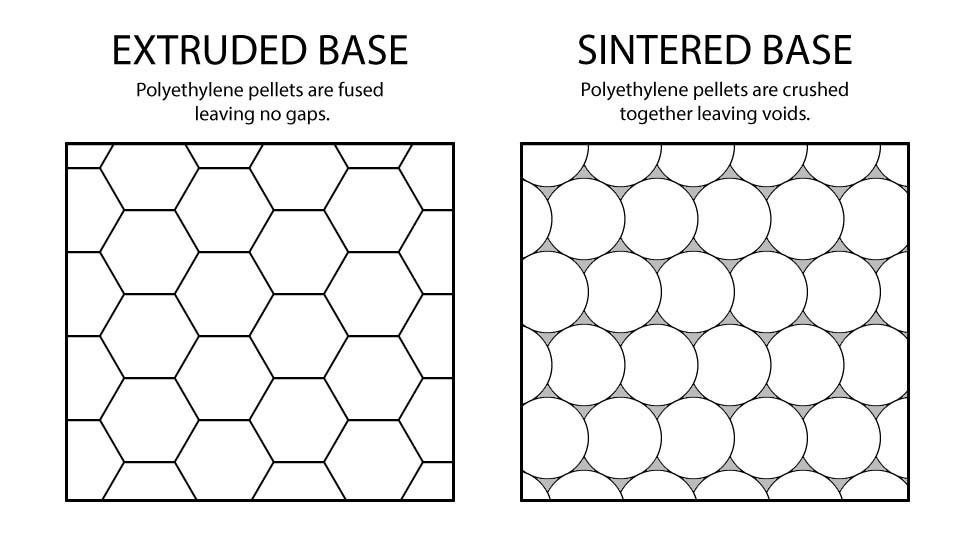
Extruded Base
To make an extruded base the pellets are melted together, opposed to a sintered base where the pellets are crushed together under high pressure to form a snowboard base. The extruded base is cheaper to make and is found mainly in cheaper snowboards. This base is very durable and holds up well to the knocks and scrapes that comes when learning to ski.
Sintered Base
A sintered base, being crushed to gain its' form, has small holes and is slightly porous because the pellets have not been fused together. These holes allow a far greater wax absorption, and as a result the snowboard is a lot faster than a snowboard with a extruded base.
